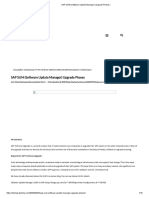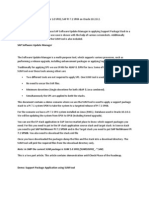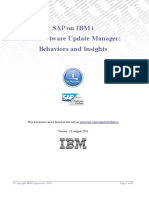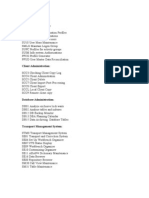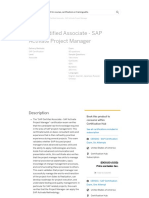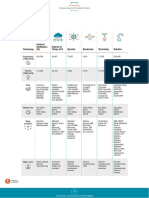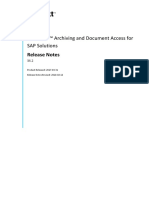0% found this document useful (0 votes)
97 views7 pagesSUM Tool
The SAP Software Update Manager (SUM) consolidates various SAP update and upgrade mechanisms into a single tool, facilitating software upgrades, support package installations, system migrations, and database migrations. There are two versions of SUM, SUM 1.0 and SUM 2.0, each tailored for different scenarios, with additional tools like SUM4HANA for automated updates of SAP HANA systems. The upgrade process consists of six phases: Extraction, Configuration, Checks, Preprocessing, Execution, and Post-processing, aimed at simplifying migration steps and reducing business downtime.
Uploaded by
B.MohanCopyright
© © All Rights Reserved
We take content rights seriously. If you suspect this is your content, claim it here.
Available Formats
Download as PDF, TXT or read online on Scribd
0% found this document useful (0 votes)
97 views7 pagesSUM Tool
The SAP Software Update Manager (SUM) consolidates various SAP update and upgrade mechanisms into a single tool, facilitating software upgrades, support package installations, system migrations, and database migrations. There are two versions of SUM, SUM 1.0 and SUM 2.0, each tailored for different scenarios, with additional tools like SUM4HANA for automated updates of SAP HANA systems. The upgrade process consists of six phases: Extraction, Configuration, Checks, Preprocessing, Execution, and Post-processing, aimed at simplifying migration steps and reducing business downtime.
Uploaded by
B.MohanCopyright
© © All Rights Reserved
We take content rights seriously. If you suspect this is your content, claim it here.
Available Formats
Download as PDF, TXT or read online on Scribd
/ 7










